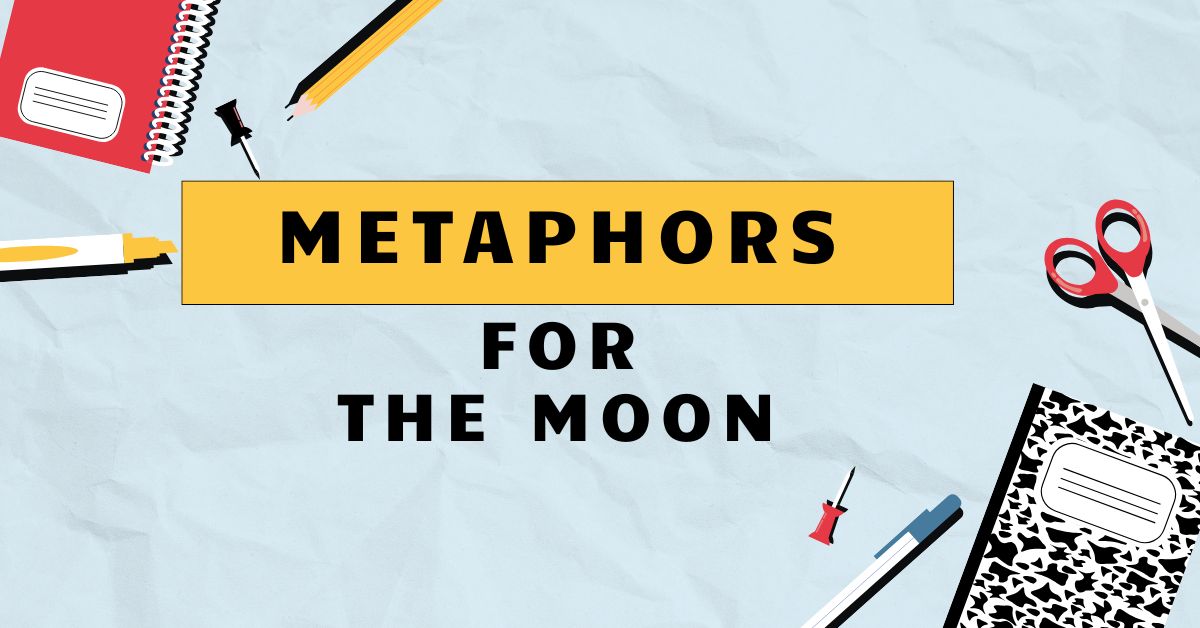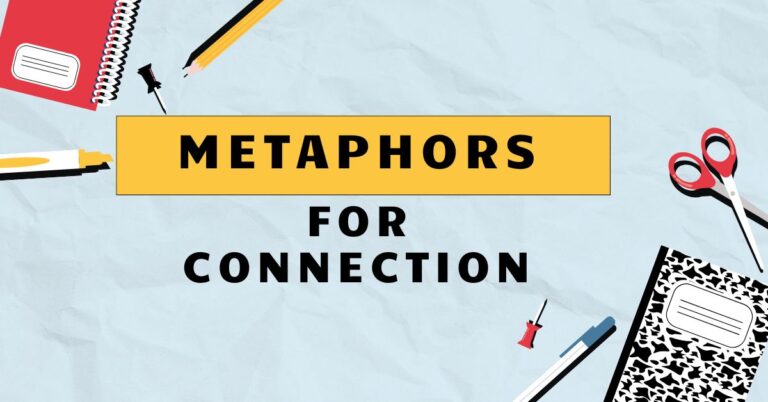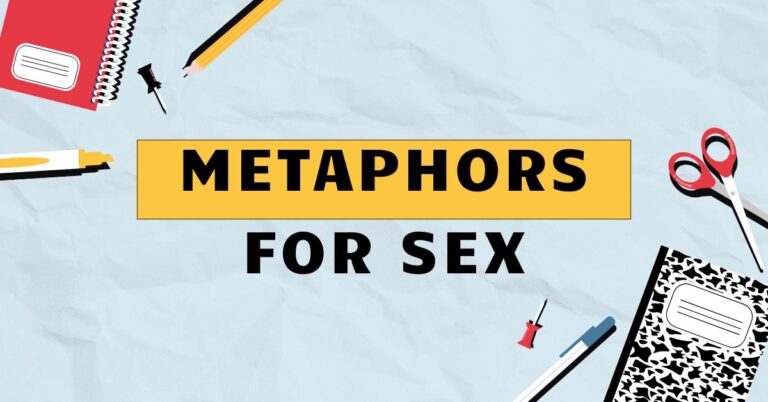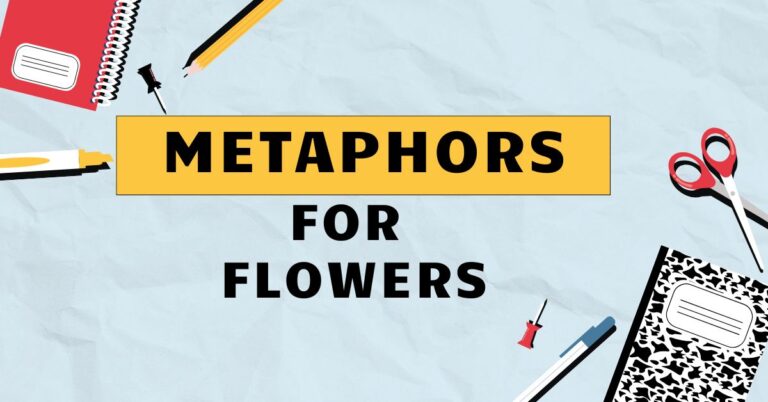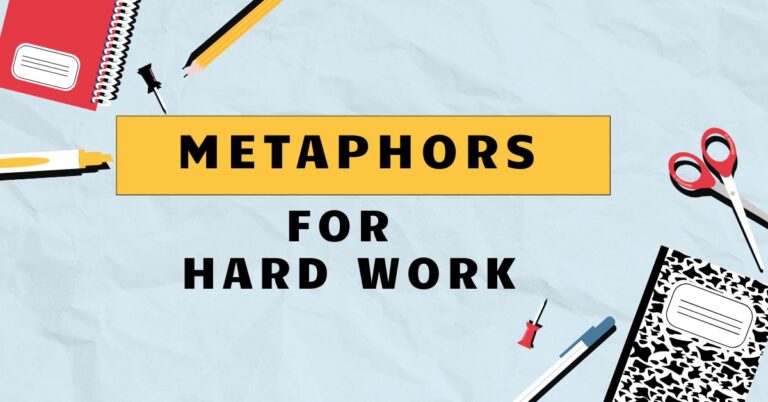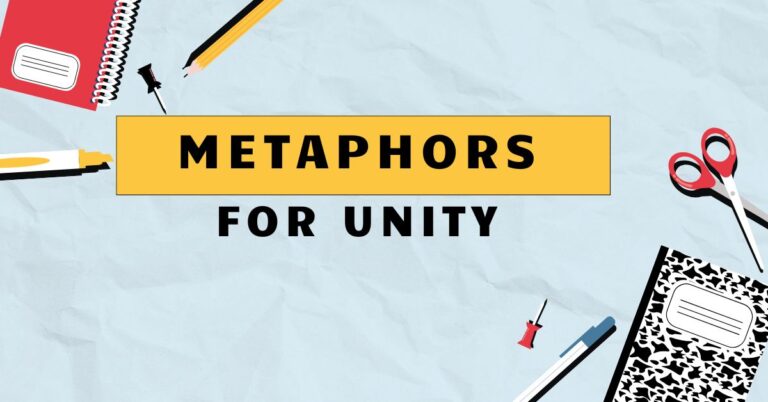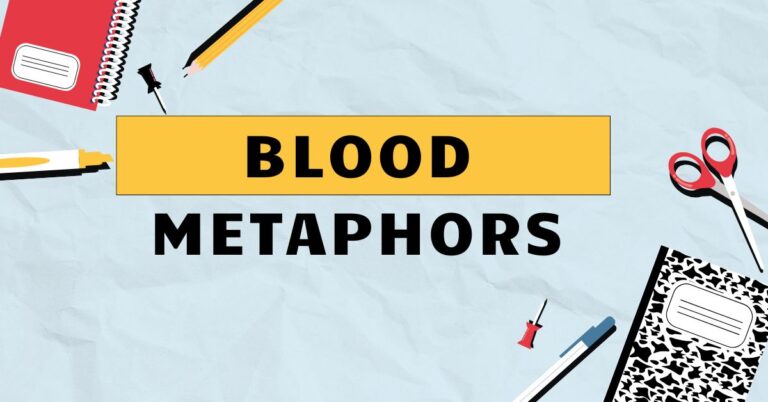47 Metaphors For The Moon: A Comprehensive Grammar Guide
Understanding metaphors is crucial for mastering figurative language, enhancing both your comprehension and expression. Metaphors enrich English by allowing us to relate seemingly disparate concepts, adding layers of meaning and emotional resonance to our communication.
This guide delves specifically into metaphors used for the moon, exploring how poets, writers, and speakers use this celestial body to evoke various emotions, ideas, and images. This article is designed for English language learners, literature students, and anyone interested in expanding their understanding of figurative language and enriching their vocabulary.
Table of Contents
- Introduction
- Definition of Metaphor
- Structural Breakdown of Metaphors
- Types of Moon Metaphors
- Examples of Moon Metaphors
- Usage Rules for Moon Metaphors
- Common Mistakes with Metaphors
- Practice Exercises
- Advanced Topics in Metaphorical Language
- Frequently Asked Questions
- Conclusion
Definition of Metaphor
Ametaphoris a figure of speech that directly compares two unlike things without using “like” or “as.” It asserts that one thing *is* another, implying a similarity or shared quality between them. This comparison is not literal but figurative, inviting the reader or listener to understand one concept in terms of another.
Metaphors are powerful tools for adding depth, color, and emotion to language, making it more engaging and memorable.
In essence, a metaphor transfers qualities or characteristics from one subject (thetenor) to another (thevehicle). The tenor is the subject being described, and the vehicle is what it is being compared to.
The common aspects between the two create thegroundof the metaphor. Understanding these components helps in analyzing and appreciating the effectiveness of a metaphor.
Metaphors function by creating a mental image or association that goes beyond the literal meaning of the words. They are used extensively in literature, poetry, everyday conversation, and even scientific discourse to explain complex ideas in simpler, more relatable terms.
The context in which a metaphor is used greatly influences its interpretation and impact.
Structural Breakdown of Metaphors
A metaphor’s structure is often implicit, relying on the reader’s ability to recognize the non-literal comparison. However, understanding the underlying components can help in crafting and interpreting metaphors effectively.
The key elements include the tenor, the vehicle, and the ground.
Tenor: This is the subject of the metaphor – the thing being described. In the context of this article, the tenor is usually the moon or some aspect of it (e.g., its light, shape, phases).
Vehicle:This is the image, idea, or concept that the tenor is being compared to. It’s what carries the metaphorical meaning.
For example, in the metaphor “the moon is a silver coin,” the vehicle is “silver coin.”
Ground:This is the shared characteristic or commonality between the tenor and the vehicle. It’s the basis of the comparison.
In the example above, the ground is the round, silvery appearance of both the moon and a silver coin.
The relationship between these elements is what creates the metaphorical meaning. The vehicle illuminates the tenor by highlighting a specific aspect or quality.
Effective metaphors rely on a clear and relevant ground that resonates with the audience.
Types of Moon Metaphors
Metaphors for the moon can be categorized based on the aspects of the moon they emphasize. These categories help to understand the different ways in which the moon can be used metaphorically.
Moon as Light
These metaphors focus on the moon’s luminosity and its ability to illuminate the night. The moon’s light is often compared to other sources of light, such as candles, diamonds, or even emotions like hope and guidance.
Moon as Shape
These metaphors emphasize the moon’s various shapes during its phases, from a crescent to a full circle. The moon’s shape is often compared to objects with similar forms, such as a sickle, a coin, or a smile.
Moon as Emotion
These metaphors link the moon to human emotions, often reflecting feelings of romance, mystery, sadness, or tranquility. The moon’s ethereal and distant nature makes it a suitable symbol for complex and nuanced emotions.
Moon as Time
These metaphors use the moon’s cycles to represent the passage of time, change, and the cyclical nature of life. The different phases of the moon can symbolize beginnings, endings, and transformations.
Moon as Influence
These metaphors highlight the moon’s perceived influence on the earth and its inhabitants, often associated with tides, emotions, and even madness. The moon’s gravitational pull and its association with the night can create a sense of mystery and power.
Examples of Moon Metaphors
Here are some examples of moon metaphors, categorized by the types discussed above. Each example includes an explanation of the tenor, vehicle, and ground.
Table 1: Moon as Light Metaphors
This table illustrates how the moon’s light is metaphorically compared to various other sources of illumination, emphasizing its brightness and ethereal quality.
| Metaphor | Tenor | Vehicle | Ground |
|---|---|---|---|
| The moon is a pearl in the inky sky. | Moonlight | Pearl | Shimmering, precious light |
| Her smile was the moon, lighting up my darkest night. | Smile | Moon | Source of light and comfort in darkness |
| The moon, a celestial candle, flickered in the breeze. | Moon | Candle | Source of soft, wavering light |
| The moon’s glow is a diamond scattered across the water. | Moon’s reflection | Diamond | Sparkling, brilliant light |
| Hope is the moon in the night of despair. | Hope | Moon | Provides light and guidance in darkness |
| The moon is a lighthouse guiding lost ships. | Moon | Lighthouse | Provides direction and safety in the dark |
| Her eyes were moons, reflecting the starlight. | Eyes | Moons | Reflective, luminous quality |
| The moon, a silver spotlight, illuminated the stage of the night. | Moon | Spotlight | Focused, bright beam of light |
| The moon’s light is a gentle caress on the sleeping world. | Moonlight | Caress | Soft, gentle illumination |
| The moon, a beacon of tranquility, shone down on the troubled sea. | Moon | Beacon | Symbol of peace and guidance |
| The moon is a lantern hung in the heavens. | Moon | Lantern | Provides light and guidance |
| The moon’s rays are silver threads weaving through the darkness. | Moon’s rays | Silver threads | Delicate, shimmering light |
| The moon is a spotlight on the stage of dreams. | Moon | Spotlight | Illuminates and highlights |
| The moon is a divine lamp, illuminating the path of destiny. | Moon | Lamp | Guidance and illumination |
| The moon’s light is a gentle promise of a new dawn. | Moon’s light | Promise | Hope and reassurance |
| The moon is a mirror reflecting the sun’s lost glory. | Moon | Mirror | Reflects light and beauty |
| The moon’s glow is liquid silver pouring over the landscape. | Moon’s glow | Liquid silver | Smooth, shimmering light |
| The moon is a cosmic firefly in the vast darkness. | Moon | Firefly | Small, intermittent light |
| The moon’s light is a soft lullaby sung to the earth. | Moon’s light | Lullaby | Soothing and calming |
| The moon is a pearl of wisdom in the night’s embrace. | Moon | Pearl | Valuable and enlightening |
| The moon, a celestial torch, lights the way for nocturnal wanderers. | Moon | Torch | Source of bright light |
| The moon’s rays are celestial fingers brushing the earth. | Moon’s rays | Fingers | Gentle, delicate touch |
| The moon is a celestial beacon, guiding sailors home. | Moon | Beacon | Direction and safety |
Table 2: Moon as Shape Metaphors
This table presents metaphors that use the moon’s shape as the basis for comparison, highlighting its various forms throughout its lunar cycle.
| Metaphor | Tenor | Vehicle | Ground |
|---|---|---|---|
| The moon is a silver coin tossed in the sky. | Full moon | Silver coin | Round, silvery shape |
| The crescent moon is a smile in the heavens. | Crescent moon | Smile | Curved, uplifting shape |
| The new moon is a promise whispered in the dark. | New moon | Promise | Beginning, potential |
| The moon is a sickle, harvesting dreams from the night. | Crescent moon | Sickle | Curved, sharp shape |
| The full moon is a plate of celestial cheese. | Full moon | Plate of cheese | Round, flat shape |
| The waning moon is a fading memory. | Waning moon | Fading memory | Decreasing, disappearing |
| The moon is a celestial fingernail clipping. | Crescent moon | Fingernail clipping | Small, curved shape |
| The moon is a celestial teardrop in the night sky. | Crescent Moon | Teardrop | Shape and emotional connotation |
| The full moon is a giant eye watching over the world. | Full moon | Giant eye | Round shape and watchful presence |
| The moon is a cosmic comma in the sentence of the night. | Crescent moon | Comma | Curved shape and punctuation mark |
| The moon is a silver bow drawn across the strings of night. | Crescent moon | Bow | Curved shape and musical imagery |
| The full moon is a celestial clock marking the passage of time. | Full moon | Clock | Round shape and timekeeping function |
| The moon is a crescent-shaped ship sailing through the stars. | Crescent moon | Ship | Curved shape and journey imagery |
| The waning moon is a melting silver sculpture. | Waning moon | Melting sculpture | Decreasing shape and artistic form |
| The moon is a celestial harp string plucked by the wind. | Crescent moon | Harp string | Curved shape and musical imagery |
| The moon is a cosmic pearl earring adorning the night sky. | Full moon | Pearl earring | Round shape and decorative elegance |
| The moon is a celestial banana peel in the sky. | Crescent moon | Banana peel | Curved shape |
| The moon is a silver scythe cutting through the darkness. | Crescent moon | Scythe | Curved shape and reaping imagery |
| The moon is a cosmic paperclip holding the night together. | Crescent moon | Paperclip | Curved shape and fastening function |
| The moon is a celestial contact lens in the eye of the universe. | Full moon | Contact lens | Round shape and enhancement imagery |
| The moon is a silver question mark hanging in the void. | Crescent moon | Question mark | Curved shape and inquisitive nature |
| The moon is a cosmic hammock strung between the stars. | Crescent moon | Hammock | Curved shape and relaxation imagery |
| The full moon is a celestial cymbal crashing in the symphony of night. | Full moon | Cymbal | Round shape and musical resonance |
Table 3: Moon as Emotion Metaphors
This table explores metaphors that associate the moon with various human emotions, reflecting its mysterious and evocative qualities.
| Metaphor | Tenor | Vehicle | Ground |
|---|---|---|---|
| The moon is a lonely wanderer in the night sky. | Moon | Lonely wanderer | Solitary, melancholic presence |
| The moon is a silent witness to our secret sorrows. | Moon | Silent witness | Observant, empathetic presence |
| The moon is a lover’s sigh in the darkness. | Moon | Lover’s sigh | Romantic, tender feeling |
| The moon is a calming balm on the fevered brow of the earth. | Moon | Calming balm | Soothing, peaceful influence |
| The moon is a haunting melody played on the strings of the night. | Moon | Haunting melody | Ethereal, evocative feeling |
| The moon is a melancholic poem written in silver ink. | Moon | Melancholic poem | Sad, reflective mood |
| The moon is a gentle guardian watching over sleeping souls. | Moon | Gentle guardian | Protective, caring presence |
| The moon is a serene smile gracing the face of the night. | Moon | Serene smile | Peaceful, comforting expression |
| The moon is a hopeful dream floating in the darkness. | Moon | Hopeful dream | Optimistic, aspirational feeling |
| The moon is a wistful memory lingering in the air. | Moon | Wistful memory | Nostalgic, longing feeling |
| The moon is a silent confidant holding our deepest secrets. | Moon | Silent confidant | Trustworthy, discreet presence |
| The moon is a gentle caress soothing our troubled hearts. | Moon | Gentle caress | Comforting, tender touch |
| The moon is a beacon of hope shining through the darkness. | Moon | Beacon of hope | Guiding, reassuring light |
| The moon is a soft lullaby sung to the weary world. | Moon | Soft lullaby | Soothing, calming influence |
| The moon is a peaceful sanctuary where we can find solace. | Moon | Peaceful sanctuary | Safe, comforting place |
| The moon is a reflective mirror showing us our true selves. | Moon | Reflective mirror | Revealing, introspective presence |
| The moon is a gentle reminder of the beauty in the world. | Moon | Gentle reminder | Inspiring, uplifting presence |
| The moon is a silent observer watching over our lives. | Moon | Silent observer | Attentive, watchful presence |
| The moon is a patient teacher guiding us through the darkness. | Moon | Patient teacher | Wise, instructive influence |
| The moon is a faithful friend standing by us in the night. | Moon | Faithful friend | Supportive, loyal presence |
| The moon, a celestial tear, mourns the loss of the day. | Moon | Celestial tear | Sad, melancholic feeling |
| The moon is a silver whisper of secrets untold. | Moon | Silver whisper | Mysterious, enigmatic presence |
| The moon is a gentle embrace comforting the lonely earth. | Moon | Gentle embrace | Caring, soothing touch |
Table 4: Moon as Time Metaphors
This table presents metaphors that use the moon to symbolize the passage of time and the cyclical nature of life.
| Metaphor | Tenor | Vehicle | Ground |
|---|---|---|---|
| The moon is a clock in the sky, marking the hours of the night. | Moon | Clock | Measurement of time |
| The moon’s phases are the pages of a calendar turning. | Moon’s phases | Calendar pages | Progression of time |
| The moon is a metronome, keeping rhythm with the tides of life. | Moon | Metronome | Regular beat, cyclical nature |
| The moon is a reminder that even darkness gives way to light. | Moon | Reminder | Cyclical change, hope |
| The moon’s cycle mirrors the ebb and flow of our emotions. | Moon’s cycle | Ebb and flow | Change, fluctuation |
| The moon is a symbol of the constant change in our lives. | Moon | Symbol | Transformation, impermanence |
| The moon is a cosmic dance, forever changing its form. | Moon | Cosmic dance | Movement, transformation |
| The moon’s phases are a testament to the impermanence of all things. | Moon’s phases | Testament | Evidence of change |
| The moon is a celestial hourglass, measuring the sands of time. | Moon | Hourglass | Passage of time |
| The moon is a cyclical story, always beginning anew. | Moon | Cyclical story | Repetition, renewal |
| The moon is a cosmic rhythm, echoing through the ages. | Moon | Cosmic rhythm | Regular pattern, cyclical nature |
| The moon’s journey is a metaphor for our own life’s path. | Moon’s journey | Life’s path | Progression, change |
| The moon is a reminder that every ending is a new beginning. | Moon | Reminder | Renewal, hope |
| The moon is a celestial compass, guiding us through the seasons. | Moon | Compass | Direction, guidance |
| The moon is a cosmic calendar, marking the passage of years. | Moon | Cosmic calendar | Measurement of time |
| The moon’s phases are a reflection of our own growth and decay. | Moon’s phases | Reflection | Change, transformation |
| The moon is a timeless symbol of the eternal cycle of life. | Moon | Timeless symbol | Enduring, cyclical nature |
| The moon is a celestial carousel, forever turning. | Moon | Celestial carousel | Cyclical movement |
| The moon’s light is a gentle reminder of time’s fleeting nature. | Moon’s light | Gentle reminder | Impermanence, change |
| The moon is a cosmic poem, each phase a new verse. | Moon | Cosmic poem | Progression, change |
| The moon is a celestial sundial, casting shadows of passing moments. | Moon | Celestial sundial | Time measurement |
| The moon is a cosmic dance, swaying to the rhythm of eternity. | Moon | Cosmic dance | Cyclical movement |
| The moon is a silver pendulum swinging through the night. | Moon | Silver pendulum | Timekeeping, cyclical motion |
Usage Rules for Moon Metaphors
When using moon metaphors, several rules can help ensure clarity and effectiveness:
- Ensure Relevance: The vehicle should have a clear and logical connection to the tenor (the moon). The shared quality (the ground) should be easily recognizable.
- Avoid Clichés: While some common metaphors are effective, try to create original comparisons that offer a fresh perspective.
- Consider Context: The meaning and impact of a metaphor depend on the context in which it is used. Consider the audience and the overall tone of the writing.
- Maintain Consistency: Avoid mixing metaphors or using comparisons that contradict each other within the same passage.
- Be Mindful of Cultural Connotations: The moon has different cultural meanings in various societies. Be aware of these connotations to avoid unintended interpretations.
Effective metaphors should enhance understanding and evoke emotion, not confuse or distract the reader. Pay attention to the imagery and associations created by your chosen vehicle.
Common Mistakes with Metaphors
Several common mistakes can weaken or undermine the effectiveness of metaphors. Avoiding these errors will help ensure that your metaphors are clear and impactful.
Mixed Metaphors: Combining two or more unrelated metaphors in a way that creates a nonsensical or confusing image.
- Incorrect: The moon is a silver bullet that will nip our problems in the bud. (Mixing “silver bullet” and “nip in the bud”)
- Correct: The moon is a silver bullet that will solve our problems swiftly.
Clichés: Overusing common or predictable metaphors that have lost their impact through overuse.
- Cliché: The moon is a big cheese in the sky.
- Improved: The moon is a celestial gorgonzola, ripe and full in the night.
Inappropriate Comparisons: Choosing a vehicle that doesn’t logically connect to the tenor or creates an undesirable association.
- Inappropriate: The moon is a rusty nail hanging in the sky.
- Improved: The moon is a polished mirror reflecting the starlight.
Overly Complex Metaphors: Creating metaphors that are too convoluted or obscure for the reader to understand easily.
- Overly Complex: The moon is a fractal of cosmic consciousness, reflecting the quantum entanglement of our souls.
- Simplified: The moon is a silent guide, reflecting our deepest selves.
Practice Exercises
Test your understanding of moon metaphors with these exercises. Identify the tenor, vehicle, and ground in each example, or create your own metaphors based on the given prompts.
Exercise 1: Identifying Metaphorical Elements
For each sentence, identify the tenor, vehicle, and ground of the metaphor.
| Question | Tenor | Vehicle | Ground |
|---|---|---|---|
| The moon is a silver button pinned to the night sky. | |||
| Her face was the moon, pale and serene. | |||
| The moon is a cosmic banana peel, ready to make someone slip. | |||
| The moon’s light is liquid poetry. | |||
| The moon is a watchful owl in the dome of night. | |||
| The moon is hope’s gentle smile in the face of darkness. | |||
| The moon is a silver coin, dropped from the heavens. | |||
| The moon is a cosmic mirror, reflecting our dreams and fears. | |||
| The moon is a silver tear, hanging in the eye of night. | |||
| The moon is a lighthouse, guiding lost souls home. |
Answers:
| Question | Tenor | Vehicle | Ground |
|---|---|---|---|
| The moon is a silver button pinned to the night sky. | Moon | Silver button | Round, silvery appearance |
| Her face was the moon, pale and serene. | Her face | Moon | Pale, serene appearance |
| The moon is a cosmic banana peel, ready to make someone slip. | Moon | Cosmic banana peel | Potential for causing trouble |
| The moon’s light is liquid poetry. | Moon’s light | Liquid poetry | Beautiful, flowing quality |
| The moon is a watchful owl in the dome of night. | Moon | Watchful owl | Observant, silent presence |
| The moon is hope’s gentle smile in the face of darkness. | Moon | Hope’s gentle smile | Comforting, reassuring presence |
| The moon is a silver coin, dropped from the heavens. | Moon | Silver coin | Round, silvery appearance |
| The moon is a cosmic mirror, reflecting our dreams and fears. | Moon | Cosmic mirror | Reflective, revealing quality |
| The moon is a silver tear, hanging in the eye of night. | Moon | Silver tear | Sad, melancholic feeling |
| The moon is a lighthouse, guiding lost souls home. | Moon | Lighthouse | Guiding, protective presence |
Exercise 2: Creating Moon Metaphors
Complete the following sentences by creating your own moon metaphors.
| Prompt | Your Metaphor |
|---|---|
| The moon is like… | |
| The crescent moon resembles… | |
| The moon’s light is as… | |
| The moon’s phases are a journey of… | |
| The moon is a symbol of… | |
| The moon is a reminder of… | |
| The full moon is like… | |
| The moon’s presence is… | |
| The moon’s absence is… | |
| The moon is a protector of… |
Example Answers:
| Prompt | Your Metaphor |
|---|---|
| The moon is like… | a silent poem written in silver. |
| The crescent moon resembles… | a curved knife, slicing through the night. |
| The moon’s light is as… | soft as a mother’s touch. |
| The moon’s phases are a journey of… | constant transformation. |
| The moon is a symbol of… | hope in the darkest night. |
| The moon is a reminder of… | the beauty that exists even in solitude. |
| The full moon is like… | a spotlight on the world’s stage. |
| The moon’s presence is… | a comforting blanket on a cold night. |
| The moon’s absence is… | a void that echoes with silence. |
| The moon is a protector of… | dreams and secrets. |
Advanced Topics in Metaphorical Language
For advanced learners, exploring the nuances of metaphorical language can lead to a deeper appreciation of its power and complexity. Here are some advanced topics to consider:
Extended Metaphors: These are metaphors that are sustained over several lines or even an entire work. They create a more complex and nuanced comparison, allowing for a deeper exploration of the relationship between the tenor and the vehicle.
Mixed Metaphors in Literature: Analyzing how authors intentionally use mixed metaphors for comedic effect or to create a sense of disorientation.
Dead Metaphors: Understanding how metaphors can become so ingrained in everyday language that their metaphorical meaning is lost (e.g., “leg of a table”).
Metaphor and Symbolism: Exploring the relationship between metaphors and symbols, and how they contribute to the overall meaning of a text.
Cultural Variations in Metaphor: Investigating how different cultures use metaphors in unique ways, reflecting their specific values, beliefs, and experiences.
Frequently Asked Questions
Here are some frequently
asked questions about metaphors and their usage, especially concerning the moon.
Conclusion
Metaphors for the moon offer a rich and diverse landscape for exploring figurative language. By understanding the structure, types, and usage rules of these metaphors, you can enhance your writing, deepen your understanding of literature, and appreciate the beauty and complexity of the English language.
Whether you’re a student, a writer, or simply a language enthusiast, mastering moon metaphors is a valuable skill that will enrich your communication and expand your creative horizons.

